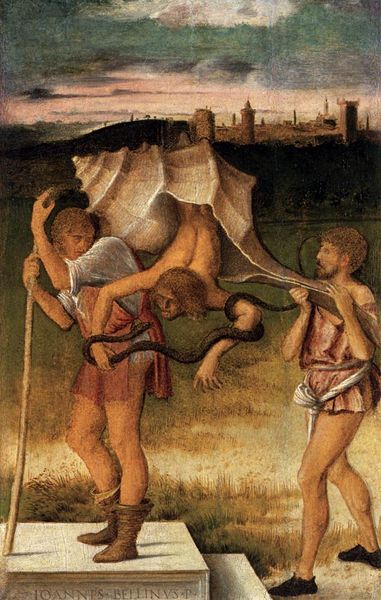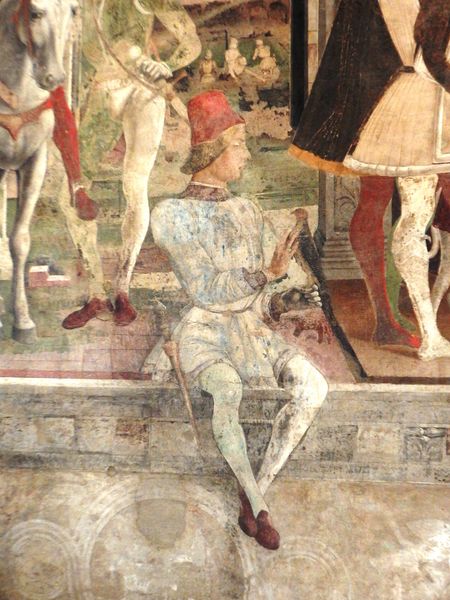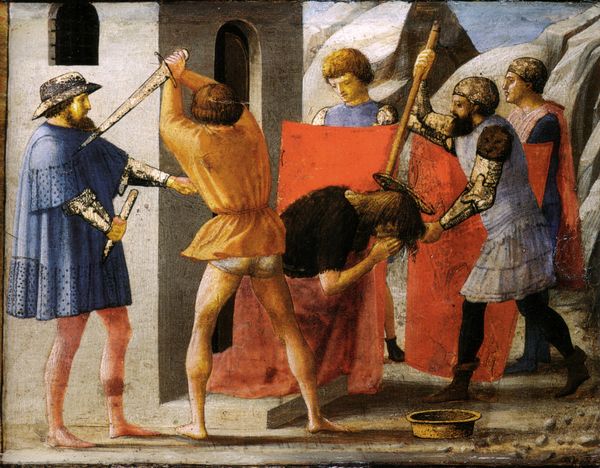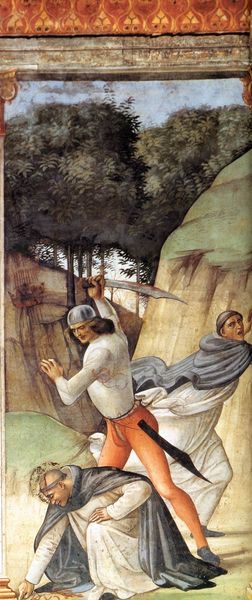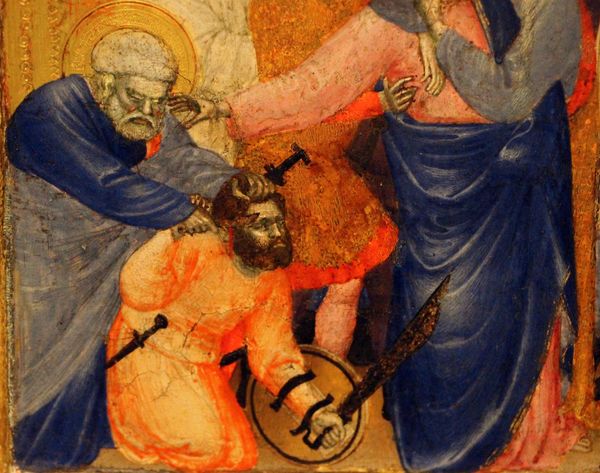
tempera, painting
#
narrative-art
#
tempera
#
painting
#
gothic
#
painted
#
figuration
#
oil painting
#
history-painting
#
italian-renaissance
Copyright: Public domain
Editor: This tempera painting, "Martirio di S. Caterina" by Giovanni da Milano, created around 1355, depicts the martyrdom of Saint Catherine. The raw emotion feels striking, almost theatrical in its presentation, heightened by the figure posed to execute her. What can you tell us about how the composition contributes to the impact of this piece? Curator: Let's begin with the compositional structure. Note the flattening of space characteristic of Gothic painting; the gold background denies depth and focuses attention on the figures. Giovanni's deployment of line is also of great importance: examine the rigid, almost angular drapery. Does that strike you as purposeful? Editor: It does seem deliberate. It makes the scene appear almost frozen, highlighting a sense of austere inevitability, despite the violence implied. Curator: Precisely. Consider, too, the stark contrast in color—the pale pinks and blues of Saint Catherine's garments against the earthy tones of the executioner and the gold backdrop. Color functions here to separate the sacred from the mundane. What is your reaction to the executioner? Editor: He seems secondary. His back is turned; there is no facial expression visible, he could almost be any man. All attention is on the subject, the textures, colors and pose create a tension. Curator: Indeed. Notice the geometry of the forms, almost crystalline. There's a formal elegance at play that elevates the gruesome subject matter. Even within the depiction of violence, there's visual control that brings a measure of refinement. The Italian Renaissance is visible through that control, as are the later paintings inspired by Gothic art. Editor: This focus on form and color truly reveals a painting full of details unseen at first glance. I realize now that the beauty is intrinsic and almost devoid of the depicted martyrdom. Curator: Agreed, it is through this meticulous attention to visual detail that we unlock the artwork's complexities. This analytical approach reveals an elegance that shapes and controls the gruesome theme of the painting.
Comments
No comments
Be the first to comment and join the conversation on the ultimate creative platform.



